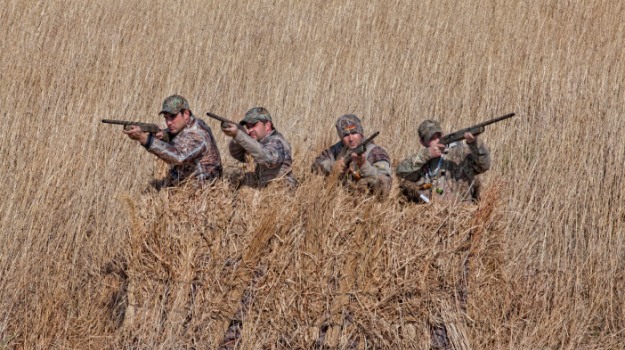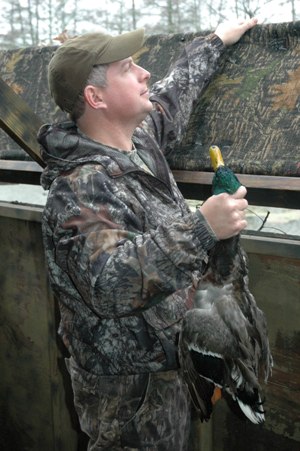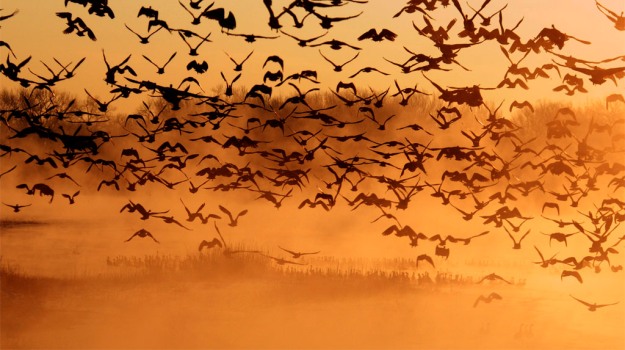
Editor’s Note: Mario Friendy of Sherwood, Oregon, is in charge of all western sales and the Zink Calls Pro Staff in Canada and is the Mossy Oak Pro Staff Regional Manager for waterfowl for the Pacific flyway. Since he was 8-years old, Friendy's been hunting ducks and geese - first with his dad in Pennsylvania where he grew up - and he’s won the Best of the West two-man duck calling championship.
Often, we’ll hunt ducks on the Columbia River here in Oregon and several other smaller rivers. In many areas, hunters put out big spreads, when they're hunting major river systems. However, we put out small spreads here in the West to be much more mobile. We’ll put out our decoys and take them in or move them, if the ducks aren’t decoying into our spread. We only put out 12 to 18 decoys when we’re hunting a river, and we’ll be hunting from a TDB 17 foot Sea Class duck boat. Like with other areas we duck hunt, the two most-important ingredients are scouting to find out where the ducks  are and staying concealed to keep the ducks from seeing you and flaring away from your blind. Usually when we’re hunting the river, we’ll be close to or have the boat right next to canary grass. Our camo of choice is Mossy Oak Shadow Grass Blades. On the river, we’ll get a good mix of ducks - mallards, pintails, gadwalls, teal and shovellers. We may see groups of 20 teal, 20 pintails, a dozen widgeon or a dozen mallards. The most common mixed flights usually will be pintails and widgeons. These two species eat the same type of feed, and the other ducks often will flock together by species. In our river spreads, we’ll put a couple mallard Avian-X decoys (https://www.avian-x.com/), and the rest will be pintails and widgeons. Occasionally, we’ll put a few teal decoys in our spread.
are and staying concealed to keep the ducks from seeing you and flaring away from your blind. Usually when we’re hunting the river, we’ll be close to or have the boat right next to canary grass. Our camo of choice is Mossy Oak Shadow Grass Blades. On the river, we’ll get a good mix of ducks - mallards, pintails, gadwalls, teal and shovellers. We may see groups of 20 teal, 20 pintails, a dozen widgeon or a dozen mallards. The most common mixed flights usually will be pintails and widgeons. These two species eat the same type of feed, and the other ducks often will flock together by species. In our river spreads, we’ll put a couple mallard Avian-X decoys (https://www.avian-x.com/), and the rest will be pintails and widgeons. Occasionally, we’ll put a few teal decoys in our spread.
Because river hunting involves wide open spaces, we call louder and more frequently than we do when we’re hunting sheet water. But of course, as the ducks get closer, we tone down our calling. I’ll still be using the Zink ATM Green Machine duck call, and we also rely on our whistles. When hunting on the river, we generally start off with a loud hail call. Our next set of calls will be soft greeting calls, usually three to five notes blown on a mallard call. We mix in our widgeon and pintail whistles with those calls and give numbers of feeding calls and feeding chatter.
In the late season, the ducks prefer to stay right on the edge of the water. As our area receives more and more rain, the water level on the river rises. The ducks like to be close to that new water, where they find the most invertebrates and seeds. I like to hunt the 200 mile Columbia River, even though it’s the most-difficult river to hunt. If we can find those ducks on that river, decoy them and call them in, I really feel like we've made a major accomplishment. River duck hunting is tough. But when we’re successful, we know we've accomplished taking ducks on one of the toughest duck hunts in our area.
Day 2: Mario Friendy: Secrets for Taking Pintails, Widgeons and Teal in the Late Season
Tomorrow: Seven Different Species of Canada Geese – the Good and Bad News




























